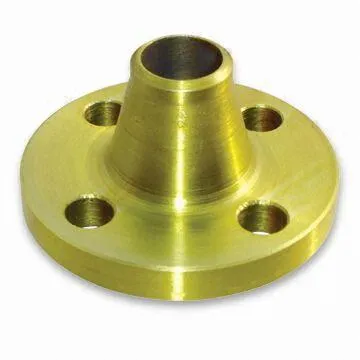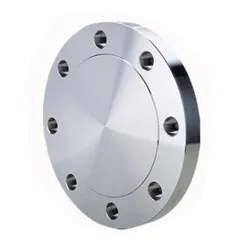-
Cangzhou Yulong Steel Co., Ltd.
-
Phone:
+86 13303177267 -
Email:
admin@ylsteelfittings.com
- English
- Arabic
- Italian
- Spanish
- Portuguese
- German
- kazakh
- Persian
- Greek
- French
- Russian
- Polish
- Thai
- Indonesian
- Vietnamese
- Zulu
- Korean
- Uzbek
- Hindi
- Serbian
- Malay
- Ukrainian
- Gujarati
- Haitian Creole
- hausa
- hawaiian
- Hebrew
- Miao
- Hungarian
- Icelandic
- igbo
- irish
- Japanese
- Javanese
- Kannada
- Khmer
- Rwandese
- Afrikaans
- Albanian
- Amharic
- Armenian
- Azerbaijani
- Basque
- Belarusian
- Bengali
- Bosnian
- Bulgarian
- Catalan
- Cebuano
- China
- China (Taiwan)
- Corsican
- Croatian
- Czech
- Danish
- Esperanto
- Estonian
- Finnish
- Frisian
- Galician
- Georgian
- Kurdish
- Kyrgyz
- Lao
- Latin
- Latvian
- Lithuanian
- Luxembourgish
- Macedonian
- Malgashi
- Malayalam
- Maltese
- Maori
- Marathi
- Mongolian
- Myanmar
- Nepali
- Norwegian
- Norwegian
- Occitan
- Pashto
- Dutch
- Punjabi
- Romanian
- Samoan
- Scottish Gaelic
- Sesotho
- Shona
- Sindhi
- Sinhala
- Slovak
- Slovenian
- Somali
- Sundanese
- Swahili
- Swedish
- Tagalog
- Tajik
- Tamil
- Tatar
- Telugu
- Turkish
- Turkmen
- Urdu
- Uighur
- Welsh
- Bantu
- Yiddish
- Yoruba

2월 . 20, 2025 05:10 Back to list
en 1092 1 type 37
In the realm of piping components and flanges, precision, durability, and compatibility are paramount. Among the various standards that assure these qualities, the EN 1092-1 Type 13 flange stands out for its exceptional design and functionality. This article delves into its unique characteristics, applications, and benefits, positioning itself as an authoritative guide for industry professionals and enthusiasts.
To leverage the full potential of EN 1092-1 Type 13 flanges, it is crucial to consult with experts who possess a deep understanding of their specifications and applications. Professional guidance ensures proper selection based on size, pressure ratings, and compatibility with other components, optimizing the performance and safety of the entire system. The expertise of industry professionals also facilitates compliance with the relevant standards and regulations, mitigating the risk of operational failures and legal issues. The trustworthiness of EN 1092-1 Type 13 flanges is further reinforced by thorough testing and certification processes. Each flange undergoes meticulous inspections to verify its mechanical properties, dimensions, and overall quality. This thorough vetting process provides end-users with confidence in the product's performance, thereby reinforcing its credibility and dependability in critical applications. In conclusion, the EN 1092-1 Type 13 flange represents a blend of advanced engineering, robust performance, and safety assurance. Its design caters to both convenient installation and enduring operation, making it a preferred choice in various industrial applications. By aligning with experts and ensuring compliance with relevant standards, organizations can harness the full benefits of these flanges, enhancing their systems' efficiency, reliability, and safety. For businesses looking to optimize their piping infrastructure, EN 1092-1 Type 13 flanges offer a compelling solution, underpinned by precision engineering and backed by authoritative standards.


To leverage the full potential of EN 1092-1 Type 13 flanges, it is crucial to consult with experts who possess a deep understanding of their specifications and applications. Professional guidance ensures proper selection based on size, pressure ratings, and compatibility with other components, optimizing the performance and safety of the entire system. The expertise of industry professionals also facilitates compliance with the relevant standards and regulations, mitigating the risk of operational failures and legal issues. The trustworthiness of EN 1092-1 Type 13 flanges is further reinforced by thorough testing and certification processes. Each flange undergoes meticulous inspections to verify its mechanical properties, dimensions, and overall quality. This thorough vetting process provides end-users with confidence in the product's performance, thereby reinforcing its credibility and dependability in critical applications. In conclusion, the EN 1092-1 Type 13 flange represents a blend of advanced engineering, robust performance, and safety assurance. Its design caters to both convenient installation and enduring operation, making it a preferred choice in various industrial applications. By aligning with experts and ensuring compliance with relevant standards, organizations can harness the full benefits of these flanges, enhancing their systems' efficiency, reliability, and safety. For businesses looking to optimize their piping infrastructure, EN 1092-1 Type 13 flanges offer a compelling solution, underpinned by precision engineering and backed by authoritative standards.
Next:
Latest news
-
ANSI 150P SS304 SO FLANGE
NewsFeb.14,2025
-
ASTM A333GR6 STEEL PIPE
NewsJan.20,2025
-
ANSI B16.5 WELDING NECK FLANGE
NewsJan.15,2026
-
ANSI B16.5 SLIP-ON FLANGE
NewsApr.19,2024
-
SABS 1123 FLANGE
NewsJan.15,2025
-
DIN86044 PLATE FLANGE
NewsApr.19,2024
-
DIN2527 BLIND FLANGE
NewsApr.12,2024
-
JIS B2311 Butt-Welding Fittings LR/SR 45°/90° /180°Seamless/Weld
NewsApr.23,2024










